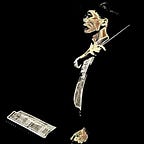作品淺釋系列
Janáček: Sinfonietta
雅納捷克:小交響曲
編按:本篇文字內容經作者授權,
用於台北世紀交響樂團〈19世紀的浪漫‧民族〉(2023年5月3日)音樂會節目釋文。1926年是雅納捷克產量甚高的一年,即使年逾古稀,仍創作不輟,代表性作品如《格里高利彌撒》(Glagolitic Mass,作品目錄Ⅲ:9)、《小交響曲》(Ⅵ:18)都在1926年完成。雅納捷克是捷克-斯洛伐克獨立運動的長期支持者,對軍樂隊的合奏形式也感到興趣,後者則是《小交響曲》最引人注目的特點,即大量銅管樂器的使用。根據環球出版社(Universal Edition)的資訊,《小交響曲》寫於1926年3月2日 — 5月15日期間,作曲家原來規劃三把法國號、三把小號、五把長號、定音鼓、豎琴等樂器,不過在總譜出版前,將小號擴編為驚人的九人規模。《小交響曲》是雅納捷克知名度最高的器樂創作,有別於所動用的可觀人數,五個樂章皆具有簡潔、凝鍊的寫作手法,各樂章的標題如下:
- 號曲(Fanfára)
―鼓號齊鳴的慶典響樂,為作品定調,功能上頗似小夜曲的首尾樂章。管絃樂團當中罕用的上低音號以及低音小號(tromba bassa),是這個樂章的配器亮點。 - 城堡(Hrad)
―在寫作期原先作為第一樂章使用,書寫雅納捷克故鄉布爾諾幽暗老舊的建築。此樂章受摩拉維亞地區(Morava)民歌元素的影響,配器方面則以木管和絃樂部門為主力,演出細緻的節奏動機。中段,銅管樂器的主題短暫再返,如古堡的宏偉態勢一般。 - 修道院(Klášter)
―詼諧曲功能的樂章,樂團全體演出困難的節奏,同時又有著動聽抒情的旋律。最急板的銅管樂器齊奏,可說是第三樂章的張力高點。 - 街道(Ulice)
―試圖捕捉城市中的繁忙與聲響,甚至有些癲狂。主要主題由小號、雙簧管、單簧管等接替演奏。 - 市政廳(Radnice)
―統合了此前所有的動機與主題,且具有非凡的氣勢,令人聯想《展覽會之畫》的最末一個樂章。
1926年6月26日,《小交響曲》於布拉格首演,由捷克名宿塔利奇(V. Talich)指揮捷克愛樂樂團演出。克倫佩勒(O. Klemperer)也是這首作品的擁護者,他在1927年3月指揮了《小交響曲》的美國首演(按:3月4日,紐約市)。此外巧合的是,庫貝利克在捷克愛樂樂團首席指揮任內的第一場演出(1942年1月),同樣演出了此曲。《小交響曲》全曲題獻予捷克斯洛伐克武裝部隊。
First published on Apr. 25, 2023.
Appendix
Reviews of Janáček’s new composition, in various Czechoslovak newspapers (the Národní osvobození):
This five-movement work is distinguished by
Janáček's customary terseness, and it again
contains the characteristic stamp of his
musical language, especially in the small,
pointed accompanying figures, happily entr-
usted, this time, to the woodwinds. The
first movement is a ceremonial intrada, the
second a kind of fiery Moravian-Slovak dan-
ce, the third combines gentle, very melodic
free movement with dancing rhythms, the
fourth, with its lively two-four time is
reminiscent of the score for the opera
Kát'a Kabanová, the final one grows from a
gentle, natural mood through majestically
escalating development that culminates in
the return of military music.From the Československá republika:
The volcanic musicality of Janáček was not
content with just fanfares: the work grew
into a complete five-movement symphony
which begins and ends with fanfares but be-
tween them, his idea of resilience,
strength and joy is variously illuminated
by tones that are lyrical, heroic and dance-
like. What has arisen from this is, along
with Taras Bulba, the highest point attained
in Janáček's orchestral works and, at the
same time, one of the most joyous (in what-
ever meaning of the word you like) of any
Czech work of art.